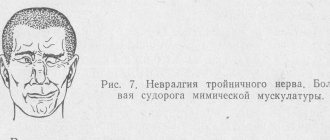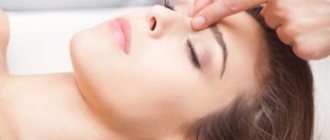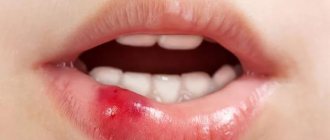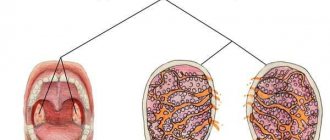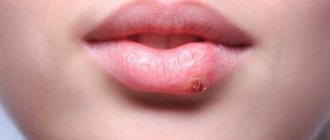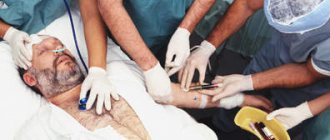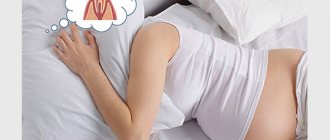general description
Lesion (neuralgia) of the glossopharyngeal (IX) nerve (G52.1) is neuralgia in which attacks of pain and trigger zones occur in the area of innervation of the glossopharyngeal nerve.
Possible etiological factors: compression by the hypertrophied styloid process, ossification of the stylohyoid ligament, compression of the nerve by blood vessels. In the life history, past infections (30%), head injuries (35%), and intoxication (25%) may be important.
Prevalence: 0.16 per 100 thousand people. Men over 40 years of age are most often affected.
Folk remedy No. 11 for the treatment of neuralgia
Nerve fibers can also be affected due to acute infection, poisoning of the body with toxins or heavy metals. Neuralgia is often caused by osteochondrosis or another disease of the musculoskeletal system. Peripheral nerves can also be damaged by tumors. Neuralgia also develops with diseases such as diabetes, vascular disease, atherosclerosis.
The peculiarity of this disease is that the debilitating pain is poorly relieved by analgesics and can last for a very long time. The area of pain is usually limited. Sometimes there is swelling, loss of sensitivity and redness of the skin.
Treatment of neuralgia is aimed at relieving pain. Classical medicine uses various drugs for this: ointments, thermal procedures, pain-relieving suppositories, tablets, injections. Significant relief from the disease is brought by the appointment of magnetic therapy, UHF and other physical procedures.
Neuralgia can also be treated at home using folk remedies. They will help to effectively relieve or significantly reduce pain. Let's get acquainted with folk recipes for various types of neuralgia in more detail.
Causes of neuralgia
Sciatic nerveIdentical causes of development provoke spinal neuralgia. Pregnancy with significant weight gain (more than 20 kg); Infections and inflammations in the pelvic organs, as well as their hypothermia; Excessive load on the lower back; Physical inactivity (inactivity); Overweight; Osteochondrosis (damage and sometimes displacement of tissues and cartilage of the vertebral discs); Fractures in the pelvis or hips; Tumors at the location of the nerve; Intervertebral hernia.
Occipital nerveExposure of the back of the head to hypothermia; Gout (a metabolic disorder that leads to the accumulation of salt deposits in the joints); Tumors of any nature or moderate to severe injuries on the cervical vertebrae and areas near them;
Facial nerveArterial aneurysm (dilation and accumulation of blood vessels in the form of sacs in the arteries leading to the brain, the diameter of the artery increases, and blood circulation in it slows down); Atherosclerosis (blockage and hardening of blood vessels that form fatty tissue around them, lose their elasticity and block the flow of blood to the organ);
Glossopharyngeal nerveInfectious diseases (tuberculosis, pneumonia, influenza...); Long-term allergic manifestations; Intoxication, exhaustion of the body; Violation of general metabolism; Diabetes; Alcohol abuse; Sclerosis (hardening and damage to the nervous system and internal organs).
Symptoms of neuralgia Signs that are also individual for any type. To correctly diagnose a disease, you need to clearly understand its symptoms, and ideally have a doctor’s confirmation of the diagnosis. Only in this case can one ask questions about how to treat neurology in general and avoid its relapse in the future. Let's look at the most pronounced symptoms that will help confirm or dispel your suspicions.
Sciatic neuralgiaThe pain spreads throughout the entire nerve and feels paroxysmal and shooting. Discomfort is felt in one specific part, without going beyond it. A burning sensation may occur in the buttocks and lower back. There is a feeling that small goosebumps are crawling over the sore spot, especially during sleep, when the body is in a relaxed state.
Glossopharyngeal neuralgia: A painful sensation at the root of the tongue, in the pharynx and tonsils that occurs during eating, yawning, and coughing. Increased production of saliva alternates with absolute dryness of the oral cavity. Bitter taste in the mouth when eating any food, even sweets.
Neuralgia of the glossopharyngeal nerve: symptoms. Patients complain of unilateral, paroxysmal, sudden, often night pain in the root of the tongue or tonsil, shooting in the throat, ear, palate, angle of the lower jaw, neck. A neuralgic attack is accompanied by facial redness, coughing, and drooling.
It is typical to have trigger points at the root of the tongue or in the tonsil area. Rarely, trigger zones can also be located on the chin, neck, and auricle. Trigger factors may include swallowing, yawning, and eating cold, bitter or sour foods. The results of a neurological examination for neuralgia of the glossopharyngeal nerve do not reveal any abnormalities. The diagnosis becomes reliable with a positive effect of carbamazepine. During the period of remission, fear persists with the formation of pain behavior.
Diagnostic criteria:
- Paroxysmal pain in the area of innervation of the glossopharyngeal nerve.
- Associated symptoms: drooling, coughing, fainting.
- Pain point behind the angle of the lower jaw.
- The attack is triggered by eating bitter food.
Patients with newly diagnosed glossopharyngeal nerve neuralgia should be carefully examined.
- Consultation with an otolaryngologist to exclude oncology of the pharynx or larynx.
- X-ray of the jaws to exclude enlargement of the styloid process or ossification of the stylohyoid ligament.
- MRI of the brain in normal and vascular modes to exclude a brain tumor and Arnold-Chiari malformation.
Only after a complete examination is a diagnosis established and treatment prescribed.
Neuralgia of the glossopharyngeal nerve: treatment. Analgesics for neuralgia of the glossopharyngeal nerve are practically ineffective. For the treatment of glossopharyngeal neuralgia, the same remedies are indicated as for trigeminal neuralgia.
The drug of choice is carbamazepine (finlepsin, tegretol). Treatment should begin with 50 mg 2 times a day after meals, with plenty of water. If the dose is well tolerated, you can increase the dose by 50 mg per day until the pain syndrome is completely relieved and trigger points disappear. A dose that makes it possible to eat without painful paroxysm is considered effective.
The minimum effective dose should be selected. The average therapeutic dose is 600-800-1000 mg. In the future, you should take the drug in a selected therapeutic dose for at least 6-8 weeks. Then gradually reduce the dose by 50 mg every 5-7 days until an individual maintenance dose of 100-200-400 mg per day is achieved. To prevent exacerbations, it is better to prescribe long-acting forms of carbamazepine (Finlepsin retard).
If carbamazepine is ineffective or poorly tolerated, gabapentin is prescribed. On the first day of administration, 300 mg is usually prescribed. If well tolerated, the dose is increased by 300 mg per day to 900 mg. Then within a week the dose is increased to 1800 mg per day. If necessary, the dose can be gradually increased to 3600 mg per day. Gabapentin is easier to tolerate than carbamazepine, but is less effective and more expensive.
Antidepressants increase the pain threshold, reduce fear of an attack, and eliminate depression. Prescribed in combination with carbamazepine or independently. For acute pain, amitriptyline can be prescribed intravenously, then switched to oral administration. The analgesic effect develops within 1–2 weeks.
To reduce side effects, treatment begins with small doses of the drug - 10 mg 2-3 times a day (especially at night), gradually increasing the daily dose (due to evening administration) to 50-75 mg. Then take amitriptyline in a therapeutic dose during the entire period of exacerbation. The drug is discontinued gradually to a maintenance dose of 12.5-25 mg per day.
New generation antidepressants are less effective for pain syndromes. If amitriptyline is contraindicated or is poorly tolerated, use fluoxetine 20-40 mg or paroxetine 20 mg or duloxetine 60 mg or venlafaxine 75-150 mg or Ixel 50 mg per day. In the indicated doses, the medications are taken throughout the period of exacerbation and for another 2 weeks, then gradually withdrawn. In a number of patients, other drugs have an analgesic effect: diphenin, clonazepam, gabapentin, valproic acid, baclofen, phenibut.
Surgical treatment is used to eliminate the causes of compression of a nerve (process or ligament) identified during examination.
Causes
Glossopharyngeal neuralgia can occur for two types of reasons. Each type has its own characteristics of symptoms and treatment.
The disease is divided into two forms - idiopathic (primary) and secondary.
When the primary form of pathology develops, the causes lie in heredity. As a result of activation of the gene responsible for this pathology, the patient begins to form a process or neoplasm in the area of the carotid artery.
The secondary form has other causes. Most often, neuralgia of this type is a consequence of a complication of another disease or the result of a pathological process occurring in the cerebellum or pons of the brain, as well as with a laryngeal tumor.
The following factors may influence the possibility of neuralgia:
- intoxication of the body;
- atherosclerosis;
- tonsil injury;
- large length of the styloid process;
- the presence of calcifications in the area of the stylohyoid ligament;
- progression of tumor formations in the larynx;
- compression of the tonsils by muscles.
Also, the reasons may be the development of diseases of the nose or ears or the formation of aneurysms.
Treatment of a disease should be based precisely on the causes of its occurrence. If the causes are not eliminated, then any treatment method will not produce results, and the pathology will progress.
Symptoms of neuralgia of the glossopharyngeal nerve have similar symptoms to inflammation of the ternary nerve. The main signal about the development of pathological processes is pain. The sensations are characterized by their sudden onset and short duration. Symptoms most often occur with certain movements of the jaw and throat muscles: swallowing, chewing, talking, or sneezing. The symptoms are similar to spasms.
Almost always, pain is felt in the area where the tonsils are located or on the base of the tongue. Symptoms may spread to the ears.
Causes
Clinical picture
The disease begins suddenly with the appearance of attacks of unilateral pain in the root of the tongue/throat within a few seconds or minutes. Pain can radiate to the ear, lower jaw area, neck (40%). During a paroxysm of pain, a dry throat is noted, followed by increased salivation (30%). An attack of pain can be triggered by eating, coughing, or talking. The disease progresses with exacerbations and improvements.
When examining the patient, unilateral hyperesthesia is revealed upon palpation in the area of the angle of the lower jaw and ear; trigger zones are at the root of the tongue. The pharyngeal reflex may be reduced. The soft palate is less mobile. Xerostomia/hypersalivation is noted (30%).
Folk remedies are indispensable in the treatment of neuralgia
Neuralgia is a severe pathology of peripheral nervous tissue. It manifests itself as strong cramping attacks of unbearable pain, stretching along the entire length of the nerve or even its branches. This disease is also characterized by an inflammatory process in clusters of nerve cells and it develops very rapidly.
Most often, this disease is divided into nerve damage:
- trigeminal;
- occipital;
- intercostal;
- ischial
Treatment of neuralgia with folk remedies is especially important, since the main causes of this serious disease are not always clearly clear, which means it is not possible to directly influence them.
Most often this disease develops after:
- severe hypothermia;
- past infectious respiratory diseases;
- introduction of viruses;
- colds;
- pathological changes in metabolism;
- significant intoxication;
- excessive consumption of alcoholic beverages;
- bruise;
- diseases of the musculoskeletal system.
Before starting her treatment, you need to consult a therapist or neurologist.
You also need to undergo a full examination of the body to exclude pathologies that occur with similar symptoms. You need to know that nerve damage is characterized by an increase in local temperature, swelling, and convulsive muscle twitching.
Therefore, it is necessary to make sure that the patient does not have malignant neoplasms, angina pectoris, pancreatitis, paresis or paralysis, muscle rupture, or hemorrhages.
After the doctor conducts an ultrasound scan, an electrocardiogram, an echo-cardiogram, an x-ray, and prescribes a clinical and biochemical blood test, only then will it be possible to say for sure that we are talking about neuralgia.
As a rule, the doctor prescribes painkillers, but they only last a very short time and do not completely help the patient regain good health. In addition, they affect the entire body.
The most commonly used external medications are:
- anti-inflammatory ointments;
- warming gels;
- suppositories with analgesics;
- injections of B vitamins;
- local anesthetics.
Temporary relief for the patient with neuralgia comes from the use of physiotherapeutic procedures. Exposure to magnetic fields, UHF, and ultraviolet radiation effectively helps relieve pain attacks for a long time.
Therefore, treatment with folk remedies becomes a truly effective method of therapy, since its use can combat the main symptoms of neuralgia. Homemade recipes completely relieve pain, eliminate muscle spasms, normalize blood circulation in the affected area, calm the patient, and stabilize the state of his nervous system.
Of course, traditional methods must be connected to the general treatment regimen and be approved by a doctor. It is difficult to overcome any disease using exclusively home methods.
Herbal medicine methods
Neuralgia can often be treated with folk remedies. Among them there are proven recipes that are used by everyone who is familiar with this disease. Here are their examples:
- Ten grams of crushed raw material from willow bark must be placed in a container with a volume of a glass of water and boiled for half an hour. Then this decoction should be taken one tablespoon three times a day. This remedy has an excellent anti-inflammatory, antipyretic and analgesic effect.
- Twenty grams of yarrow raw material should be poured with a glass of boiling water and left for an hour. You need to drink twenty grams of solution four times a day. It strengthens the body, relieves pain, eliminates muscle spasms and reduces inflammation.
- Chamomile is very popular. You need to take eighty grams of dry raw material, add two glasses of water and boil for ten minutes. Then the resulting decoction must be filtered and taken three teaspoons per day. The use of this recipe is intended for a long period of treatment. Chamomile relieves inflammation, eliminates muscle spasms, and has a general calming effect.
- You can take twenty grams of dried mint, place it in a two hundred milliliter container and boil well for at least ten minutes. You need to take one hundred grams of the resulting decoction twice a day. It has a significant calming effect, completely eliminates spasms, relaxes muscles, and well normalizes the overall functioning of nervous tissue.
- Geranium, which grows on almost every windowsill, can have a significant healing effect. You need to take its leaves, bandage it to the affected nerve and make a warm compress. Keep for about two hours. It can help relieve nervous tension, reduce pain, and relax muscles.
Neuralgia is difficult to treat traditionally. Therefore, home methods sometimes come to the fore:
- Many people use black radish juice, which they rub on the affected area. It is able to warm up the diseased nerve, draw out toxins, reduce swelling and eliminate pain.
- Garlic oil, used to prepare a medicinal tincture, has a good effect on neuralgia. Twenty grams of the substance are poured into a bottle of vodka, and then the affected areas are lubricated with this essence. It has a warming, distracting and anti-puffiness effect.
- You can take a handful of lilac buds, grind them and mix them with pork fat. This ointment should be rubbed into the affected nerve. It relieves inflammation, has a muscle relaxant effect and eliminates pain.
- The simplest, but at the same time very effective remedy provides great help. You need to boil an egg, cut it lengthwise and, without waiting for it to cool, apply it to the affected area. This method has a warming effect, eliminates swelling and draws out cellular breakdown products formed during inflammation.
When using these remedies, neuralgia is less likely to manifest itself as painful attacks. The patient's immunity is strengthened, the functioning of nerve cells is normalized, muscles relax, and unpleasant sensations no longer radiate to neighboring areas. They gradually decrease and then disappear completely.
Therefore, a disease such as neuralgia can be treated quite well with home recipes. Unlike pharmacological drugs, they more effectively help to make the pain less severe, stabilize the state of the vascular system, eliminate convulsive manifestations, and calm the nerves.
In order to avoid relapse of the disease, it is necessary:
- take care not to catch a cold;
- dress warmly;
- do not go out sweaty;
- allocate sufficient time for sleep;
- avoid nervous tension;
- take vitamins;
- stop drinking alcohol;
- regularly visit a neurologist;
- promptly treat respiratory infections;
- increase immunity;
- eat a balanced diet;
- avoid obesity;
- do exercises daily;
- take walks in the fresh air more often.
Medicines provide good results, but they are quite expensive, do not last long, are addictive and have a number of side effects. An attack of pain can take the patient by surprise and sometimes there is no time to run to the pharmacy, and even more so, to the doctor for a prescription. Then only a folk recipe allows a person to feel relief.
Treatment of glossopharyngeal nerve damage
- Anticonvulsants, non-narcotic analgesics, B vitamins.
- Physiotherapy, drug blockades.
- Elimination of nerve compression factors.
Treatment is prescribed only after confirmation of the diagnosis by a medical specialist.
Essential drugs
There are contraindications. Specialist consultation is required.
- Tramadol (analgesic). Dosage regimen: IV, IM, SC in a single dose of 50-100 mg, possible repeated administration of the drug after 4-6 hours. The maximum daily dose is 400 mg.
- Carbamazepine (anticonvulsant). Dosage regimen: orally, starting with 0.1 g 2 times a day, then the dose is increased by 0.1 g per day to 0.6-0.8 g (in 3-4 doses). After the pain disappears, the dose is gradually reduced to 0.1-0.2 g per day.
- Milgamma (B complex of vitamins). Dosage regimen: therapy begins with 2 ml intramuscularly 1 time per day for 5-10 days. Maintenance therapy - 2 ml IM two or three times a week.
Treatment
Trigeminal neuralgia should be treated with anticonvulsants. The most commonly used is carbamazepine (Finlepsin). When starting therapy, you can additionally prescribe non-steroidal anti-inflammatory drugs. It is also necessary to use neuroprotective therapy with B vitamins, PP, and use vasoactive drugs (for example, trental).
In some cases, the attack is stopped by lubricating the “trigger points” (root of the tongue, tonsils, etc.) with a solution of local anesthetic. In many cases, physical therapy is an additional treatment option. In case of long-term ineffective conservative treatment, neuroma, which requires surgical treatment, should be excluded.
Recommendations
A consultation with a neurologist and magnetic resonance imaging of the brain are recommended.
| • | Leading specialists and institutions for the treatment of this disease in Russia: |
| Doctor of Medical Sciences, Head of the Department of Russian State Medical University, Professor, Academician of the Russian Academy of Medical Sciences Gusev E.I.; Director of the Research Institute of Neurosurgery named after. Burdenko N.N. Konovalov A.N. | |
| • | Leading specialists and institutions for the treatment of this disease in the world: |
| G. AVANZINI, Italy; Professor Duke Samson, USA. |
Content
- 1 Anatomy
- 2 Pathology
Glossopharyngeal nerve
[n.
glossopharyngeus (PNA, BNA); n. glossopharyngicus (JNA)] - paired (IX pair), mixed cranial nerve. Sensitive fibers of the glossopharyngeal nerve innervate the mucous membrane of the posterior third of the tongue, including taste buds, mucous membrane of the pharynx, tympanic cavity, eustachian (auditory) tube, mastoid cells, palatine tonsils and palatine arches, carotid sinus and carotid glomus; motor fibers - the stylopharyngeal muscle and, through the pharyngeal plexus, together with the vagus nerve, the constrictors of the pharynx and the muscles of the soft palate; autonomic parasympathetic secretory fibers - parotid gland.
Incidence (per 100,000 people)
| Men | Women | |||||||||||||
| Age, years | 0-1 | 1-3 | 3-14 | 14-25 | 25-40 | 40-60 | 60 + | 0-1 | 1-3 | 3-14 | 14-25 | 25-40 | 40-60 | 60 + |
| Number of sick people | 0 | 0 | 0 | 0.1 | 0.13 | 0.16 | 0.1 | 0 | 0 | 0 | 0.1 | 0.11 | 0.12 | 0.1 |
Symptoms and treatment of neuralgia of the ear node
To do this, after passing the diagnosis, the doctor prescribes the patient a course of painkillers and anti-inflammatory injections or physiotherapeutic procedures.
In cases where the painful sensations become unbearable, the patient should be given an injection of Dicaine solution, which creates a blockade for the attack for six hours. Treatment may be supplemented with analgesics. All medications can only be taken with the permission of a doctor; self-treatment can lead to anaphylactic shock and a general deterioration in the body’s condition.
In exceptional cases, the patient is prescribed surgical intervention. Such a decision can be made if the patient cannot eat and speak normally or there is a risk to his life. If pain occurs only in the larynx area, then the operation is performed on the outer part of the skull. When the pain spreads, surgery may be performed from the inside.
Along with medicinal methods of treating glossopharyngeal nerve neuralgia, you can also use folk remedies. You cannot avoid visiting a doctor and following his recommendations. Since folk remedies have contraindications, you should consult with the doctor who is caring for the patient before starting treatment.
Willow bark. It is necessary to pour boiling water over 10 grams of bark and boil for twenty minutes. Take 1 tablespoon four times a day.
Horseradish and black radish. Vegetable juice is rubbed into the affected areas.
black radish
Rue leaves and valerian root. The crushed root and leaves (1 tbsp each) are steamed with boiling water for half an hour. Drink one glass every day.
Honey and eucalyptus. Pour boiling water (0.5 l) over dry eucalyptus leaves (50 g) and boil for ten minutes. Then add two tablespoons of honey. Make lotions.
Horseradish, honey and potatoes. All components must be mixed (1 tbsp each). The potatoes should be grated first. The mixture is applied to the inflamed area in a one-centimeter layer. It is recommended to cover the area with a scarf.
During treatment with traditional medicine methods, the patient may experience side effect symptoms. If they appear, you should immediately consult a doctor. It is also recommended to ask your doctor about the possibility of combining such treatment methods with taking medications.
For trigeminal neuralgia, pick a few green leaves from indoor geranium, place them on linen material, apply the leaves to the sore spot, bandage it and tie a warm woolen scarf on top. After two hours the pain subsides. Do the procedure 2-3 times a day, applying freshly picked geranium leaves.
During an attack of neuralgia, hard-boil an egg, cut it in half and immediately apply both halves, while tolerably hot, to the place where the pain is felt most strongly. When the egg cools down, the pain will disappear, and neuralgia will not bother the patient for quite a long time.
Mix equal parts black elderberry juice and Cahors wine. For trigeminal neuralgia, take 3 tbsp. 2 times a day before meals. The course of treatment is 7-8 days.
Stir 200 g of fresh, finely grated horseradish roots with 0.5 kg of honey and 0.5 liters of olive oil. Keep refrigerated. Take 1 tbsp. 3 times a day 20 minutes before meals. In the evening before going to bed, put a compress of fresh horseradish leaf, greased with honey and salted on a sore spot with neuralgia, wrap a horseradish leaf with newspaper, and strengthen it with several layers of cotton cloth on top.
Grind the heads of flowering dandelions, pour vodka 1:1, leave in a dark place for 12 days, shaking the contents periodically, strain, squeeze out the rest. For joint pain, lubricate the joints with the tincture for 5 minutes, then rub until a burning sensation appears, wrap the joints in linen material, and insulate them overnight.
100 g of dry (200 g of fresh) St. John's wort flowers, pour 2 liters of dry wine, leave in a dark, cool place for a week, then bring to a boil, cook in a sealed container over low heat for 1 hour, leave until cool, squeeze out the rest. Take 50 ml 2-3 times a day 30 minutes before meals for inflammation of the sciatic nerve. The course of treatment is 1.5 months.
Apply fresh radish or horseradish juice to painful areas to reduce and relieve pain.
Apply fresh or steamed wormwood to a sore spot to relieve pain. To enhance the effect, mix wormwood gruel with olive or sea buckthorn oil.
Rub ointment from dried and ground aspen buds (prepared in butter or Vaseline in a ratio of 1:4) into painful areas. A decoction of aspen bark and buds is also used for neuralgia.
For intercostal neuralgia, rue tincture helps well: pour 2 tablespoons of rue herb with a glass of alcohol, leave in a tightly closed bottle for a week. Make lotions with this tincture during an attack of pain.
Salt healing bath with sage: pour 4 tablespoons of sage into a glass of warm water, leave for an hour, strain. Pour the infusion into a bath with water temperature of 37 degrees and add 4 tablespoons of sea salt. Take this therapeutic bath at night for 5-10 minutes. The course of treatment is 10 procedures.
Neuralgia is a disease that can affect different parts of the body with its location, affecting the peripheral nerve, plexus and vessels of the nerves, pressing on them with surrounding tissues, resulting in severe pain in intensity.
It is important to know that this pain has virtually no effect on the sensitivity and mobility of the affected area; otherwise, it is already a manifestation of another disease, such as neuritis, which are often confused with each other.
The problem is gaining considerable momentum in terms of relevance, so many people are interested in how to get rid of neuralgia at home and is it even possible? It is possible if you pay timely attention to the presence and development of the disease, and provide proper help and support to your own body.
Absolutely any nerve in the structure of the human body is at risk, but there is a group that is most often susceptible to attack by this disease:
- dorsal;
- facial or trigeminal;
- sciatic;
- occipital;
- glossopharyngeal nerve.
Causes of neuralgia
The reasons depend on which area has succumbed to the disease; for each type they are characteristic and individual, so let’s find out what causes neuralgia depending on the location of the lesion.
The ear ganglion is relatively rarely the cause of neuralgic pain, but still, you need to be aware of this source of pain associated with the cranial nerves, especially since this type of neuralgia can simulate attacks of otitis media, forcing the patient to consult an otolaryngologist in vain.
Symptoms of neuritis
The symptoms of various types of neuritis are determined by the functions of the nerves, the area of their innervation and the degree of damage. Peripheral nerves consist of sensory, motor and autonomic fibers, the defeat of which is accompanied by symptoms characteristic of all types of neuritis.
Sensory disorders include parasthesia (tingling sensation), numbness, and decreased sensitivity in the area of inflammation. Motor disorders are accompanied by a complete or partial decrease in muscle strength, their atrophy, and decreased tendon reflexes. Trophic and autonomic disorders are characterized by symptoms such as bluish skin, swelling, depigmentation, local hair loss, brittle nails, sweating, the appearance of trophic ulcers, and dry skin.
- Neuritis of the axillary nerve occurs due to its compression by a crutch or dislocation of the humerus. Patients complain of intense pain in the shoulder joint and difficulty raising their arms. During the examination of the patient, paresis and atrophy of the deltoid muscle, decreased sensitivity above the shoulder joint and on the outer surface of the shoulder are detected.
- Radial neuritis manifests itself with different symptoms depending on the location of the inflammation. Damage to the upper shoulder or axillary fossa is characterized by symptoms such as the inability to abduct the thumb and extend the hand, difficulty bending the arm at the elbow joint, and decreased sensitivity in several fingers. Inflammation in the lower third of the shoulder or upper forearm is accompanied by difficulty in straightening the fingers and hands. Damage to the middle part of the shoulder is not accompanied by impairment of forearm extension and elbow reflex.
- Ulnar nerve neuritis is accompanied by paresthesia and a sharp decrease in sensitivity of the hand. Muscle weakness occurs in the abductor and adductor muscles of the fingers. Atrophy and hypotrophy of the eminence of the little finger and thumb are also observed. Due to muscle atrophy, the palm appears slightly thicker. “Clawed foot” syndrome is also noted, in which the main phalanges of the fingers are straightened and the middle ones are bent.
- Median nerve neuritis usually begins with severe pain in the fingers and inner surface of the forearm. In patients, the sensitivity of half of the palm is impaired. This pathology is also characterized by the inability to turn the hand palm down, flex three fingers and the hand at the wrist joint. There is pronounced muscular atrophy of the eminence of the thumb.
- Carpal tunnel syndrome begins to develop with short-term numbness in three fingers. After the patient experiences paresthesia, numbness of the fingers becomes permanent. Patients complain of severe pain in the fingers and palm, which goes away after moving the hand. Painful sensations sometimes occur in the area of the forearm and elbow joint.
- Lumbosacral plexopathy is characterized by weakness of the lower extremities and pelvic muscles, loss of tendon reflexes in the legs, and decreased sensation in the legs. Patients experience pain in the lower back, legs and hip joint.
- Sciatic neuritis is characterized by shooting or dull pain in the buttock that affects the lower leg and thigh. Patients have decreased sensitivity of the foot and Achilles reflex, and hypotonia of the calf and gluteal muscles is observed. Symptoms of nerve tension are also noted: the appearance or worsening of pain when the nerve is severely stretched due to straight leg lifting or squatting.
- Femoral neuritis may present with difficulty flexing the hip and straightening the legs. Patients also experience a decrease in sensitivity and atrophy of the anterior surface of the thigh, a decrease in the knee reflex, and the appearance of pain with light pressure under the inguinal ligament.
Treatment of neuritis
Treatment of neuritis is aimed at eliminating the etiological factors that provoked it. The disease caused by the influence of infectious agents is treated with antibacterial therapy (antibiotics and sulfonamides). Neuritis of viral etiology is treated with antiviral medications - interferon derivatives and gamma globulin. Treatment of the disease caused by ischemia involves the prescription of vasodilating drugs (aminophylline, papaverine, complamine).
In the acute course of traumatic neuritis, the patient is advised to immobilize the injured limb. In addition, the patient is prescribed anti-inflammatory, painkillers, dehydration drugs, as well as vitamin B. The outcome of treatment for neuritis with traumatic etiology directly depends on the patient’s age. Namely, the younger the patient, the higher the chances of his full recovery.
Physical therapy is indicated for the treatment of various types of neuritis. It is advisable to prescribe it to patients with damage to the facial nerve. Patients can perform special exercises and massages at home. Complex treatment of neuritis also involves the use of physiotherapy: pulsed currents, UHF, ultraphonophoresis with hydrocortisone, electrophoresis of prozerin, novocaine, lidase.
According to indications, surgical treatment may be prescribed. The operation is performed by a neurosurgeon. In acute cases, to eliminate severe compression of the nerve, surgery is performed to decompress it. Surgery is also indicated if there are no symptoms of nerve repair. Surgery to suture the nerve may be prescribed. According to indications, nerve plastic surgery is also prescribed.
How it appears and feels
The disease begins to manifest itself with unilateral pain that lasts no more than a few minutes. The pain syndrome increases and occurs in the form of attacks that occur only on one side.
Painful sensations occur at the root of the tongue, the area of the tonsils, and spread to the area of the soft palate, pharynx, and ear. The sensation may spread to the neck, eye, and lower jaw.
During attacks, dry mouth is also observed, and after an attack, salivation becomes profuse. Painful attacks can be triggered by speech, eating food with an excessively high or low temperature, chewing food, yawning, coughing, and swallowing.
Weakening of the stylopharyngeal muscle with neuralgia of the glossopharyngeal nerve causes a lump in the throat, however, it is little pronounced due to the insignificant role of this muscle in the swallowing process. Sensory disorders may cause problems with swallowing and chewing food.
Neuralgia of the glossopharyngeal nerve has periods of remission and periods of exacerbation in its development, usually periods of exacerbation occur in the cold season (autumn and winter), and in the absence of pain, symptoms such as a burning sensation and twitching near the root of the tongue appear, which intensify with coughing and eating. Cough occurs frequently and is caused by the sensation of a foreign body in the throat.
In addition to the clinical signs of the disease, there are also general symptoms such as low blood pressure, arrhythmia and other changes in heart rate, weakness in the limbs, and loss of consciousness.
Complications of neuritis
As the disease worsens, persistent movement disorders may occur: paralysis and paresis. Disruption of muscle innervation can lead to muscle atrophy and contractures. Most complications of this disease are determined by which nerve was affected:
- olfactory - unilateral decrease in sense of smell;
- oculomotor - restriction of movement of the eyeball, double vision, drooping eyelid;
- visual - significant decrease in vision;
- abductor - restriction of movements of the eyeball;
- glossopharyngeal and vagus - problems with swallowing and speech, impaired sensitivity and taste, ear pain;
- facial - paresis (incomplete paralysis) or paralysis of facial muscles;
- sublingual - atrophy of half the tongue;
- median - disorders of flexion of the hand and several fingers, as well as pathology of sensitivity of the palm and three fingers;
- diaphragmatic - hiccups, shortness of breath, pain in the hypochondrium;
- elbow - weakness of the finger flexors, sensitivity disorder of the palm, atrophy of the interosseous muscles;
- radial - problems with extension of the fingers and hand, impaired sensitivity of the hand;
- femoral - problems with hip flexion and leg extension at the knee joint;
- sciatic - weakening of the flexors and extensors of the foot, pain on the back of the thigh and posterolateral surface of the lower leg, sagging gluteal muscles, decreased sensitivity of the foot and lower leg.
